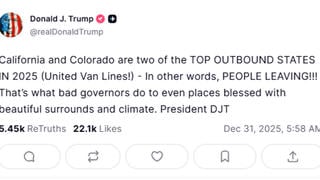Corrections Policy | Lead Stories
Did you spot a mistake in one of our articles? Want to request a correction? Do you have additional info? Let us know via our contact page...
Why, how and when we update articles:
Lead Stories aims to get correct information out as soon as possible after we detect a piece of trending content that contains a falsehood. This means that sometimes we will publish an initial version of a story as soon as we have enought facts and evidence needed to prove something is not real, with updates to follow later.
In some other cases reality catches up with us: that celebrity death hoax where we concluded the person was still alive might need an update when they actually die a few years later. Science may make new discoveries, so at some time in the future there *really* may be a proper study that actually confirms something which hasn't been "scientifically proven" yet today.
Unfortunately sometimes we also make mistakes (although we try our best to avoid them and we have editors who are supposed to catch them before publication). A source might provide incorrect info to us, contradicting information from a more reliable source may appear, someone might make a mistake in their math or logic, something may get formulated incorrectly (by omitting a word or phrase or by messing up the order...), there could be a copy-paste error, a quote could be misheard...
And sometimes we just make typos or mess up grammar.
Updates
Additional facts can be added to a story after the initial publication which provide additional support or evidence for the conclusion but which don't change it. In such cases there will be a note at the bottom the article in the "Updates" section, along with the date/time when the updates were made. An updated article will get a notification that reads "STORY UPDATED: check for updates below" below the headline.
In cases where the fact check was correct at the time of publication but where "reality caught up" and made the conclusion incorrect we will update the story in the same way when we become aware of the new information (think articles about death hoaxes where the person actually dies a few years later or stories that pointed out there was no scientific evidence for something at the time of publication but where science has since made a new discovery).
Corrections
Articles that are corrected for any of the reasons listed below reasons will be listed on our "Corrections" page.
- If it turns out we had wrong or incomplete information in a part of a story and the correct information was available at the time of publication (we will also make a note in the updates section after fixing the mistake).
- If the addition of new information or a review of the existing information warrants changing the conclusion of a fact check we will also alter the title of the story (and possibly the main image caption) because the conclusion of each fact check is part of the headline and the reason for the conclusion is usually in the caption (as you can read on our "How We Work" page).
- If spelling, style, grammar, transcription, math, logic or copy-paste mistakes affect the conclusion of a story (they also warrant a note in the updates section after fixing).
Note: some of the older stories on the "Corrections" page are actually just updates that wouldn't be included anymore under the current version of this policy.
Silent changes
We can and do silently correct grammar, spelling and style in articles post-publication as long as it doesn't change the information or conclusion. We feel that fixing a random typo doesn't really merit explicit notification (unless for example it is in a name important to the story and it might lead to confusion about who or what we are talking about exactly).
Headline & Caption changes on social media
Stories where the headline or caption changes will also be entered into Twitter's Card Validator and Facebook's Sharing Debugger tools after the update, which will update the headline and caption of the story everywhere the link has been shared on Twitter and Facebook, making sure that even people who only see the story on those platforms get to see the updated version.
Complaints
In accordance with Article 6 of the European Code of Standards, any individual or organisation that believes that a member of the European Fact-Checking Standards Network significantly failed to fulfill the requirements of the Code, if the complaint is not satisfied by the organisation concerned, can submit a complaint to the European Fact-Checking Standards Network for evaluation by the Governance Body here. The procedure above also requires that you first try to contact us to attempt to get a resolution of your issue before you can submit a complaint.
About Us


Lead Stories is a fact checking website that is always looking for the latest false, misleading, deceptive or inaccurate stories, videos or images going viral on the internet.
Spotted something? Let us know!.
Lead Stories is a:
Most Read
-

-

Fact Check: Satirical California 'Rep. Jack Kimble' Post About Other Countries Considering Invading U.S. Over Corrupt President Is NOT Real
Fact Check
-

Fact Check: Video Does NOT Show Nicolás Maduro Saying 'Come For Me ... Cowards' In Response To Trump DOJ's $50 Million Bounty
Fact Check
-

Fact Check: Viral Image of 'Captured Maduro' Is NOT Real -- Maduro's Head Was Digitally Attached To Body Of Ukrainian Businessman Known For Ties With Putin
Fact Check
-

Fact Check: Viral Video Does NOT Show Caracas, Venezuela Under Missile Bombardment -- 2025 Israel Footage
Fact Check
-

Fact Check: Image Does NOT Show Real CBS News Report That Gabbard Thwarted A Rep. Jeffries Attempt To Tip Off Maduro -- It's Rage Bait
Fact Check
-

Fact Check: Maritime Drug Law Enforcement Act of 1986 Supported By Chuck Schumer Does NOT Make It Legal To 'Blow Drug Boats Out Of The Water'
Fact Check
Most Recent
-

Fact Check: Image Does NOT Show Real CBS News Report That Gabbard Thwarted A Rep. Jeffries Attempt To Tip Off Maduro -- It's Rage Bait
Fact Check
-

Lead Stories' Top Debunks Of 2025: Charlie Kirk, Jeffrey Epstein, And What Trump Did NOT Say
Analysis
-

Fact Check: Satirical California 'Rep. Jack Kimble' Post About Other Countries Considering Invading U.S. Over Corrupt President Is NOT Real
Fact Check
-

Fact Check: Viral Image of 'Captured Maduro' Is NOT Real -- Maduro's Head Was Digitally Attached To Body Of Ukrainian Businessman Known For Ties With Putin
Fact Check
-

Fact Check: Viral Video Does NOT Show Caracas, Venezuela Under Missile Bombardment -- 2025 Israel Footage
Fact Check
-

Fact Check: California And Colorado Are NOT 'Top Outbound States' With People Leaving -- Trump Cites Questionable Source
Fact Check
-

Fact Check: FBI, ICE Did NOT Raid Yacht Near Miami & Rescue 34 Students Sex-Trafficked By A Harvard Professor
Fact Check
